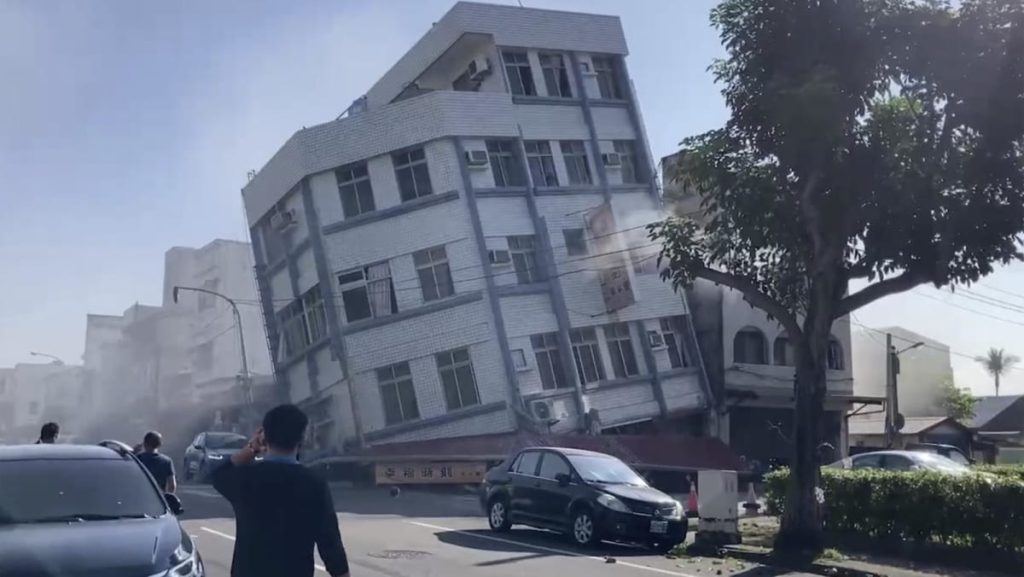A powerful magnitude-7.2 earthquake struck off the coast of Taiwan, resulting in at least seven deaths and over 700 injuries. The quake was the strongest to hit the island in 25 years and caused significant damage to buildings in the area. The epicentre was located 18km south of Hualien City, prompting tsunami warnings that extended to Japan and the Philippines before being lifted. Officials warned of potential aftershocks in the days following the earthquake, which was felt across Taiwan and offshore islands.
Images captured by local television showed buildings leaning at precarious angles in mountainous areas, with rescuers using ladders to assist trapped individuals. Landslides were reported in some areas, and strong tremors in Taipei led to the temporary closure of the subway system. Despite the widespread impact of the earthquake, most subway lines were able to resume service. Witnesses described the shaking as intense, with one individual stating that it felt as though their house was on the verge of toppling over. A woman who runs a bed-and-breakfast in Hualien city recounted the chaos of trying to calm frightened guests during the quake, noting that it was the most significant earthquake she had ever experienced.
Officials from Taipei’s Central Weather Administration’s Seismology Center emphasized that the earthquake was shallow and close to land, contributing to its widespread effects. The director warned of the potential for additional tremors in the coming days as the region dealt with the aftermath of the quake. The impact of the earthquake was felt not only in Taiwan but also in neighboring countries, leading to tsunami warnings that were later lifted. Efforts to assess the extent of the damage and assist those affected by the earthquake were underway, with emergency responders working to rescue trapped individuals and address infrastructure issues caused by the quake.
The earthquake’s toll on Taiwan included loss of life, injuries, and significant structural damage to buildings, particularly in mountainous regions. The strength of the quake and its shallow depth contributed to the widespread impact felt across the island and in offshore areas. Efforts to restore services and support those affected by the earthquake were ongoing, with officials and emergency responders working to address immediate needs and assess long-term recovery efforts. The resilience and preparedness of communities in the face of natural disasters became evident as individuals shared their experiences and worked together to navigate the aftermath of the earthquake.
In response to the earthquake, local authorities implemented safety measures and ensured that residents were informed of potential risks and precautions to take. The resilience of communities in the face of natural disasters was showcased as individuals navigated the challenges posed by the earthquake. Efforts to address the immediate needs of those affected by the quake were prioritized, with emergency responders and volunteers working to provide assistance and support. As the region braced for potential aftershocks, officials emphasized the importance of preparedness and vigilance in the face of natural disasters, highlighting the need for coordinated efforts to mitigate risks and enhance resilience in the future.
The earthquake in Taiwan served as a stark reminder of the unpredictable nature of natural disasters and the importance of readiness and response efforts. It also underscored the resilience of communities and the dedication of emergency responders in times of crisis. As the region worked to recover from the impact of the earthquake, lessons learned from the event were likely to inform future disaster preparedness and response initiatives. By fostering collaboration and coordination among stakeholders, communities could build greater resilience and enhance their ability to mitigate the impact of future disasters. The earthquake in Taiwan served as a catalyst for renewed efforts to strengthen preparedness and response measures, emphasizing the need for ongoing vigilance and proactive measures to protect lives and property in the face of natural hazards.


